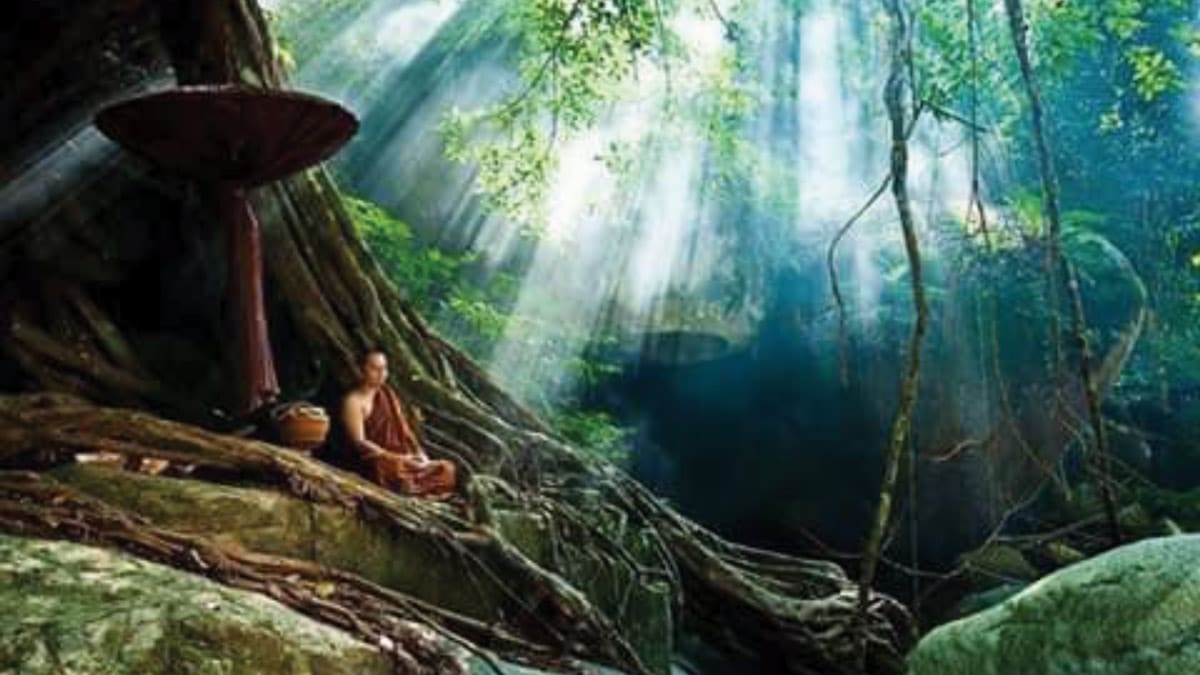Blog 1 from the Yoga Teacher Therapy course 2016
atmavikasayoga.in
Pranayama
One of the most common definitions of Pranayama is: control of the vital force through the breath. According to the yogic science, when our prana is imbalanced, our thoughts are scattered and breath irregular, it can lead to all kinds of diseases. When balanced we feel focused and connected to our mission in life, we will find great power within ourselves. People who practice pranayama often describe a decrease in the amount of sleep, increase of Energy and efficiency, a feeling of well-being and connectivity with their intuition and with higher levels of awareness.
But is it all that? What are we really doing practicing pranayama, what Prana really is, how can we get to it? Let’s give a look to the ancient and modern literature. Mythology is philosophy in a symbol, so, is there any connection between Pranayama and mythology? the first example is the story of Lord Hanuman, the monkey God, mentioned in the Mahabharata and depicted as the God of wind. He is immortal, manages many languages and is a master poet, but he is better known for his power, so strong to move mountains . So Hanuman appears to be no other than our own Prana: is connected to the wind, cannot be killed like the Energy in the universe and…who moves mountains and seas, who pumps our hearts and blow air in our lungs if not the Prana? Hanuman is also a great poet, only Prana can be as big and powerful as the mountain moving power and as delicate as the creative power in poetry. Shifting now from the past to the present…What is said by modern science instead?! Quantum mechanics noticed that particles behaved like waves and introduced the wave-particle duality.Already in the 1937 Schroedinger wrote “what we observe as material bodies and forces are nothing but shape and variations in the structure of space itself” and then also Einstein rejected the idea of discrete particles and believed that particles were in fact part of a continuous field. Also modern physics with the theory of the strings are suggesting that we live in a wave-based universe, matter is simply the focal point of a vibration in an Energy sea called aether. The secret of ‘Sacred geometry’ is not about geometry per se, it’s about vibrations that take on geometrical patterns. So perhaps Prana can be described as tiny vibrating strings that, put together appropriately, create everything: matter, Energy and force. This is compatible with Hindu Philosophy where Prana is thought to be the basic building block of everything, as are strings.
If Prana manifests itself in this platform through vibration, how can we get closer to these waves apart receiving them from external sources? Where are the boundaries among Prana an its gross manifestation, such as light, sound ect.? For example we can consider if, is there any connection between Prana and sound? Prana is a more subtle vibration than the sound vibration. Actually what we call sound is a vibration which parameters belong to a particolar range limited by our senses, out of that we just cannot perceive. But Prana is the cause of all vibration, it takes over all the different forms to vibrate to the different levels, is the base of everything, is omnipresent, omniscent, omnipotent. Sound is not omnipotent. OM is our inner sound not udible, one of its meaning is unheard sound. Sound is the expression of Prana, it can reveil the basis of the sound which is prana to you. In our level we cannot directly go and do anything with Prana, so we begin from a grosser level. We work with the body from the concrete to attain more subtle levels, the Prana. Our aim is to understand the subtle, but because we are in a physical level from here we move to subtle level, that’s why physical sound can lead you to the inner sound and the inner vibration, the Prana. This is the reason why chanting mantra repetition are used.Inner sound makes the breath move, we could hear the birth of the sound of breath, so ham, the breath repeats the mantra I’m He, I’m that I’m. Last thing we loose is the Prana, when the body stop singing So Ham, I’m He…I’m He, body looses the life, then is just a perishable body.
It comes that whatever is the practice we apply to concentrate on it, we are moving from different forms to get to the same undifferentiated substance. Pranayama is the first gate entering which we leave the gross to step into the subtle, it opens up to the Reality we cannot perceive by senses. Here ends the use we can do of words and concepts and begins the inner research towards the Source.
For breath is the life of beings and so is called “the life of all”
Upanishad 11.2
Pranayama
Una delle più comuni definizioni di Pranayama è: controllo della forza vitale attraverso il respiro. La scienza dello Yoga ci dice che quando il nostro prana è sbilanciato i nostri pensieri sono convulsivi, il respiro irregolare e ciò può portare ad ogni sorta di malattia. Quando è bilanciato ci sentiamo concentrati, connessi alla nostra missione nella vita e troviamo grande forza in noi stessi. Coloro che praticano pranayama spesso notano una decrescita nel numero di ore di sonno, aumento di energia ed efficienza, sensazione di benessere e connessione con la loro intuizione e più alti livelli di consapevolezza. Ma è tutto qui?
Cosa stiamo veramente facendo quando pratichiamo Pranayama, cosa realmente è il Prana, come possiamo avvicinarlo? Diamo un’occhiata alla letteratura antica e moderna. La mitologia è filosofia in simboli e potrebbe fornirci qualche spunto per comprendere. Il più grande esempio è la storia di Lord Hanuman, il Dio scimmia menzionato nel Mahabharata e descritto come Dio del vento, immortale, conoscitore di molte lingue e poeta maestro, ma è meglio conosciuto per la sua forza così grande da muovere montagne. Così riflettendo Hanuman sembra proprio avere le stesse caratteristiche del nostro Prana: è connesso al vento, non può essere distrutto come l’energia nell’universo (si può solo trasformare), e chi muove mari e montagne e pompa i nostri cuori e soffia aria nei nostri polmoni se non il Prana? Hanuman è anche un grande poeta, e solo il Prana può essere tanto forte da muovere montagne e così delicato come la forza creativa nella poesia. Ora spostiamoci dal passato al presente…cosa dice a riguardo la scienza moderna? La meccanica quantistica ha notato che le particelle si comportano come onde e ha introdotto la dualità onda- particella. Già nel 1937 Schroedinger scrisse “ciò che osserviamo come corpi e forze materiali non sono altro che forme e variazioni nella struttura dello spazio stesso” e poi anche Einstein rigettò l’idea delle particelle discrete e affermò che le particelle erano infatti parte di un campo continuo. Anche la scienza moderna con la teoria delle stringhe sta suggerendo che noi viviamo in un universo di onde, la materia è semplicemente il punto focale di una vibrazione in un mare di energia chiamato etere. Lo stesso segreto della geometria sacra non riguarda la geometria per se, riguarda vibrazioni che danno vita a modelli geometrici. Così forse il Prana può essere descritto come sottili stringhe vibranti che messe assieme appropriatamente creano ogni cosa, materia, Energia e forza. Ciò è compatibile con la filosofia induista dove il Prana è creduto essere il mattoncino base con cui ogni cosa è costruita, così come lo sono le stringhe.
Se il Prana manifesta se stesso in questa piattaforma attraverso la vibrazione, come possiamo avvicinarci a queste onde a parte riceverle da fonti esterne? Dov’è il confine tra Prana e la sua grossolana manifestazione come la luce o il suono? Potremmo per esempio considerare…che relazione c’è tra Prana e suono?Il Prana è una più sottile vibrazione della vibrazione del suono. Ciò che noi chiamiamo suono è una vibrazione i cui parametri appartengono a una particolare gamma limitata dal nostro senso uditivo, al di fuori della quale non possiamo percepire. Ma il Prana è la causa di tutte le vibrazioni, copre tutte le forme di vibrazione esistenti in vari livelli, è la base di ogni cosa, è onnipresente, onnisciente e onnipotente,il suono invece non è onnipotente. OM è il nostro suono interiore non udibile, uno dei significati della monosillaba OM è appunto suono non udibile. Il suono è l’espressione del Prana e ci può rivelare le basi del suono che è il Prana. Al livello in cui siamo non possiamo direttamente arrivare al Prana e farci alcunché, quindi dobbiamo cominciare da un livello più grossolano. Dobbiamo lavorare col corpo dal concreto per attingere ai livelli più sottili, il Prana.
Il nostro scopo è capire il sottile, ma poiché siamo in una dimensione fisica dobbiamo da questa spostarci ad un livello più sottile, questo è il motivo per cui il suono fisico può portarci a conoscere il suono interiore non udibile e la vibrazione interiore, il Prana. Questa è la ragione per cui la ripetizione del canto dei mantra è utilizzata. Il suono interiore fa muovere il respiro, potremmo sentire la nascita del suono del respiro…SO HAM…, il respiro ripete il mantra IO SONO LUI, IO SONO CIO’. L’ultima cosa che perdiamo è il Prana, quando il corpo smette di cantare SO HAM…SONO LUI, SONO LUI…il corpo perde la vita, e diventa materia deperibile. Concludiamo che qualsiasi sia la pratica che noi applichiamo ci stiamo muovendo da diverse forme per arrivare alla stessa sostanza indifferenziata. Pranayama è il primo cancello entrando il quale ci lasciamo alle spalle il grossolano per entrare nel sottile, apre la via alla Realtà che non è percepibile dai sensi. Qui finisce l’uso che possiamo fare delle parole e comincia la ricerca interiore verso l’Origine.
Per il respiro è la vita degli esseri e così è chiamata la “vita di tutto”
Upanishad 11.2


Awesome!